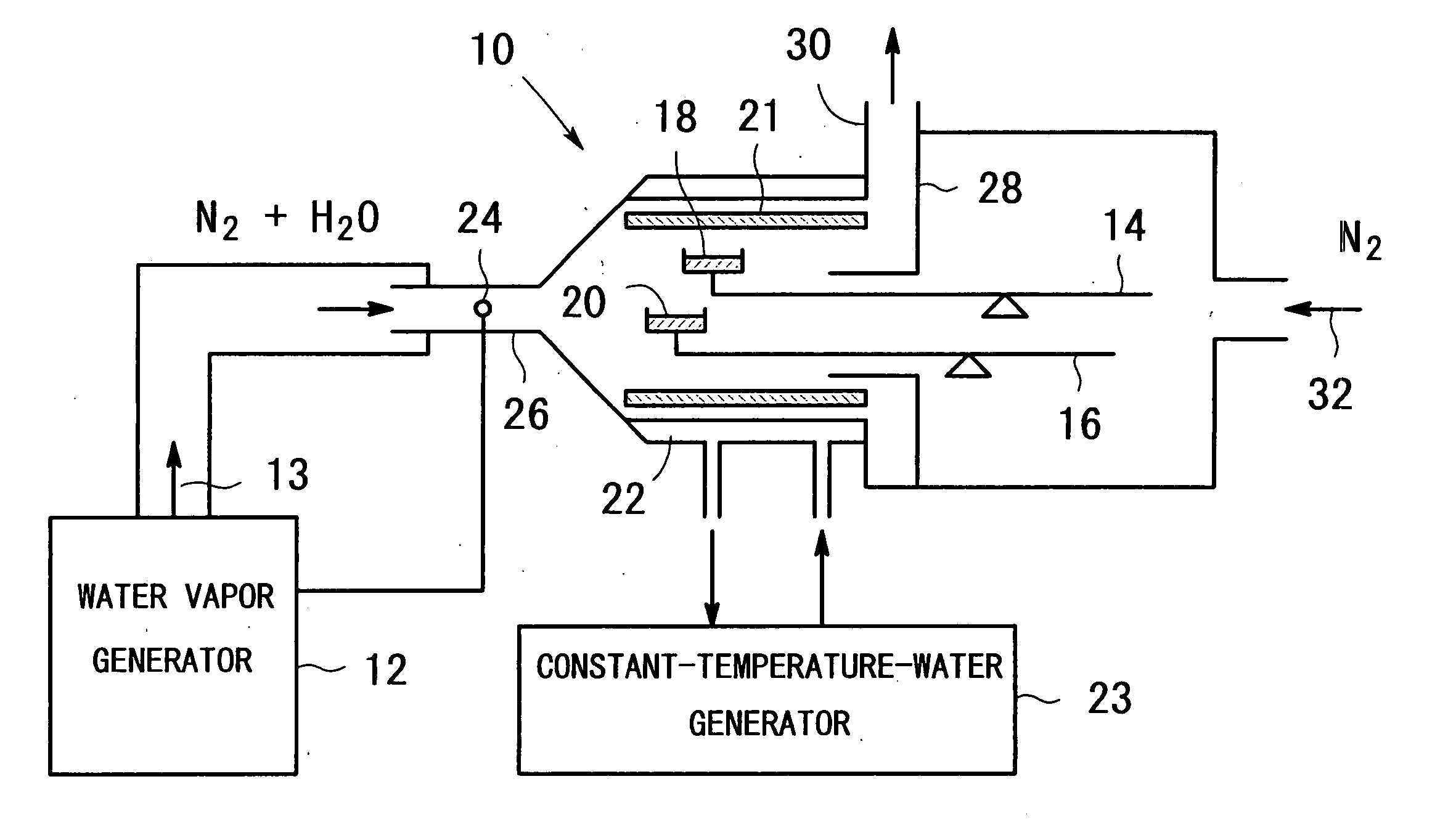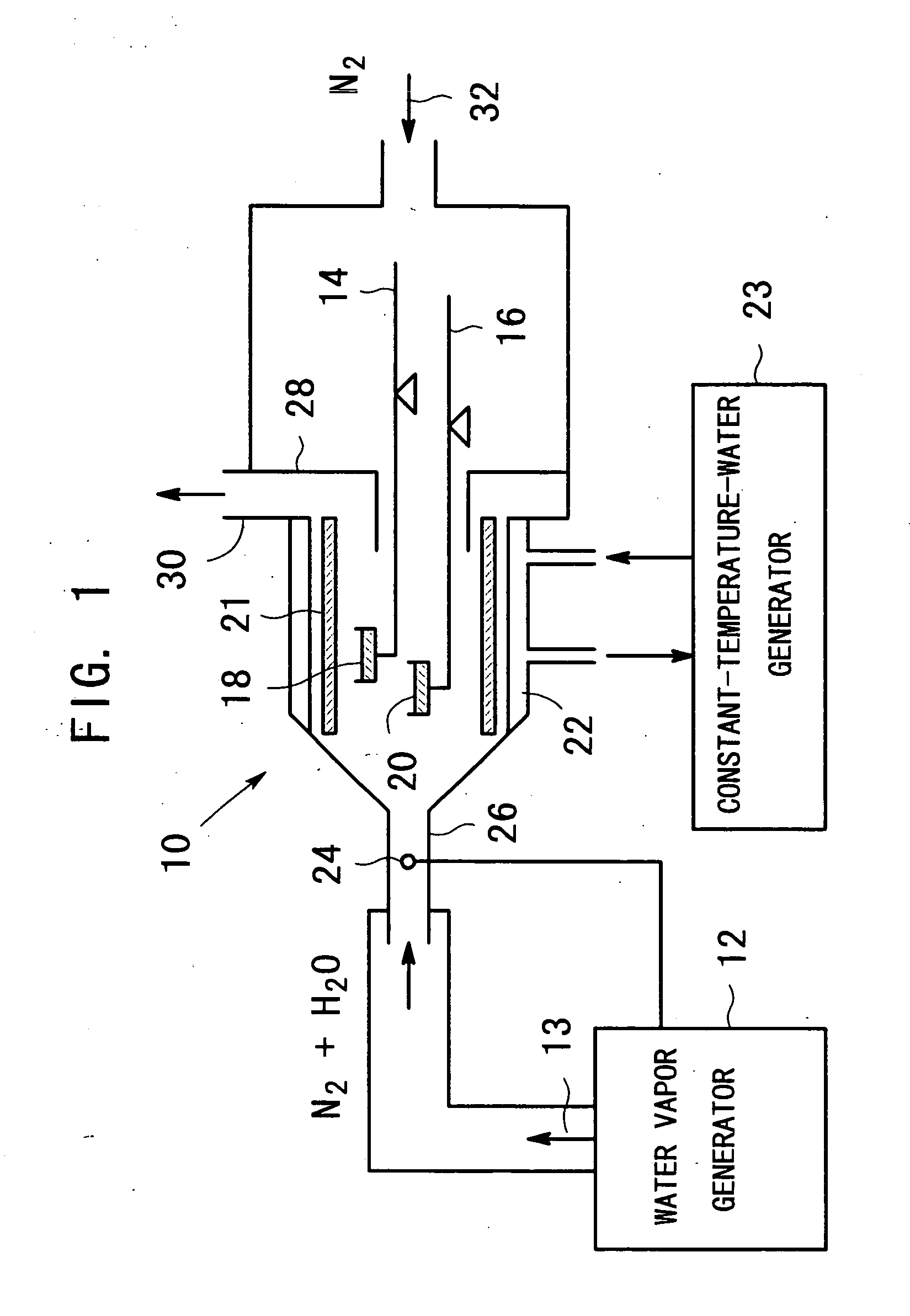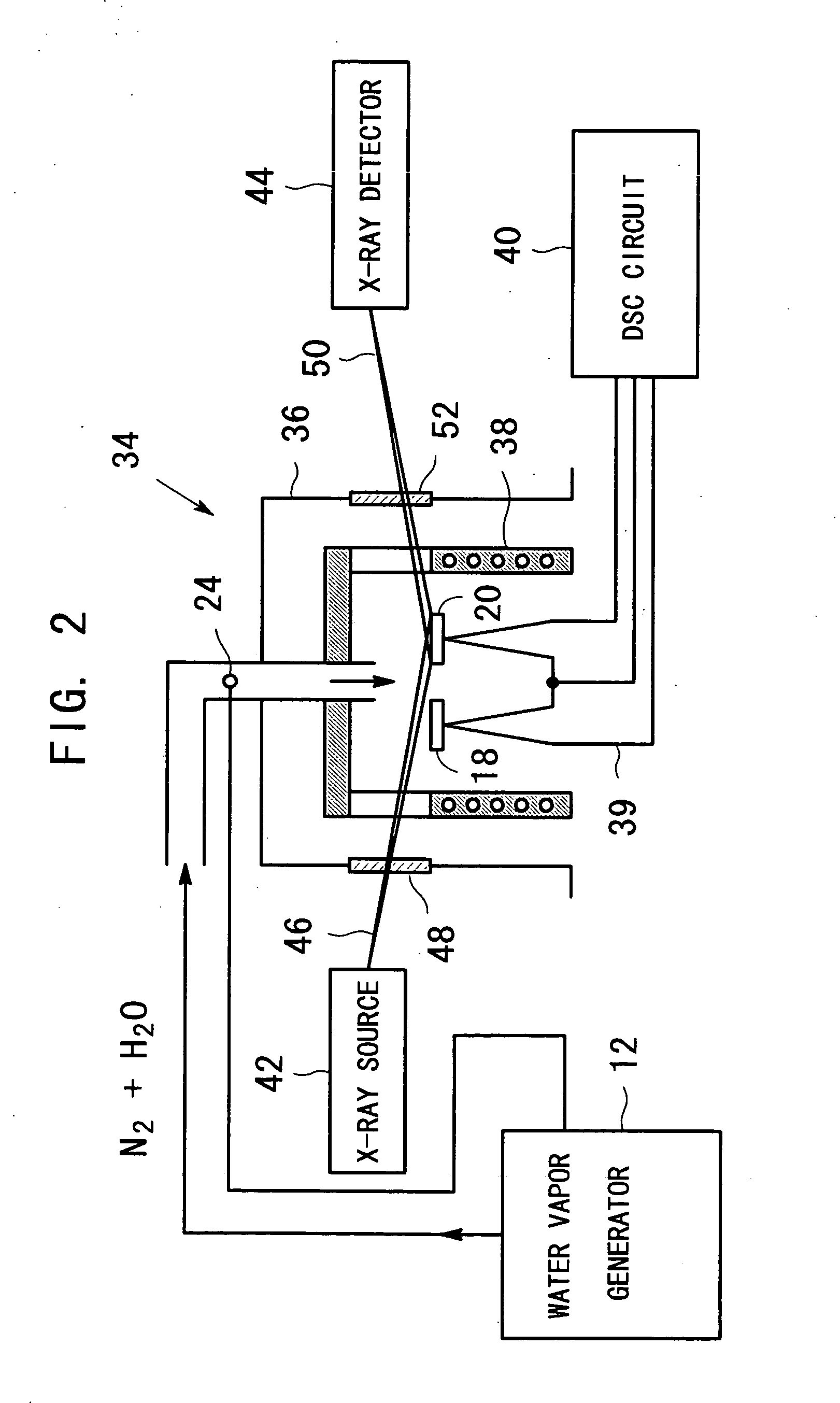Apparatus for producing metal oxide
a metal oxide and apparatus technology, applied in the direction of liquid gas reaction process, thin film type liquid gas reaction, coating, etc., can solve the problem that materials with a low vapor pressure cannot be used as raw materials in the cvd process, few materials with a high vapor pressure at a low temperature, and many materials that do not meet these requirements. to achieve the effect of preventing dew condensation of water vapor
- Summary
- Abstract
- Description
- Claims
- Application Information
AI Technical Summary
Benefits of technology
Problems solved by technology
Method used
Image
Examples
example 1
[0031] In the apparatus shown in FIG. 1, zinc acetate dihydrate was used as the raw material and heated in an atmosphere of water vapor under the condition that: 8.6 to 9.7 mg zinc acetate dihydrate powder was put in a sample vessel made of aluminum with a diameter of 5 mm and a depth of 2.5 mm and heated with a programming rate of 5° C. / min. The result is shown in FIG. 4. Three kinds of water vapor partial pressure were used: the relative humidity of 90 percent (water vapor partial pressure of 17.9 kPa), 60 percent (12.0 kPa) and 30 percent (6.0 kPa) all at 60° C. with the use of nitrogen gas as a carrier gas. The amount of the measuring sample was 9.7 mg for 90 percent, 9.5 mg for 60 percent and 8.6 mg for 30 percent. There can be seen from the curves the following phenomena. The weight loss begins around 110° C. at any water vapor partial pressure. The weight loss has been completed around 230° C. at 17.9 kPa, around 240° C. at 12.0 kPa and around 260° C. at 6.0 kPa. The final we...
example 2
[0034] In the apparatus shown in FIG. 2, zinc acetate dihydrate was used as the raw material and heated in an atmosphere of water vapor under the condition that: about 10 mg zinc acetate dihydrate powder was put in a sample vessel made of aluminum with a 7-mm-square cross-section and a depth of 0.2 mm and heated with a programming rate of 4° C. / min in an atmosphere of nitrogen gas and water vapor with a water vapor partial pressure of 6.4 kPa. The result is shown in FIG. 6. The graph on the right side in FIG. 6 shows the DSC data, while the graphs on the left side show the XRD data. Three X-ray diffraction patterns correspond to the temperatures marked with white circles on the DSC curve. The X-ray diffraction patterns were measured with the condition that X-rays were CuKa and the scanning speed of the diffraction angle 2θ was twenty angular degrees per minute. It is noted that although many X-ray diffraction patterns were measured at the interval of 6 to 7° C. during the temperatur...
example 3
[0036] In the apparatus shown in FIG. 1, zinc acetate dihydrate was used as the raw material and heated under the condition that: 10 mg zinc acetate dihydrate powder was put in a sample vessel made of aluminum with a diameter of 5 mm and a depth of 2.5 mm and heated in an atmosphere of nitrogen gas and water vapor with a water vapor partial pressure of 17.9 kPa with a variable programming rate so as to make a weight loss rate constant, noting that the maximum programming rate is set to 5° C. / min. The result is shown in FIG. 7. Another similar measurement was also carried out for a water vapor partial pressure of 12.0 kPa, its result being almost the same as the graph in FIG. 7. The technique of heating the sample so as to make a weight loss rate constant in the thermogravimetric analysis is disclosed in detail in, for example, Japanese Patent Publication 11-23442 A (1999).
[0037] There can be seen from the curve in FIG. 7 the following phenomena. When making the weight loss rate con...
PUM
| Property | Measurement | Unit |
|---|---|---|
| Temperature | aaaaa | aaaaa |
| Pressure | aaaaa | aaaaa |
| Pressure | aaaaa | aaaaa |
Abstract
Description
Claims
Application Information
 Login to View More
Login to View More - R&D
- Intellectual Property
- Life Sciences
- Materials
- Tech Scout
- Unparalleled Data Quality
- Higher Quality Content
- 60% Fewer Hallucinations
Browse by: Latest US Patents, China's latest patents, Technical Efficacy Thesaurus, Application Domain, Technology Topic, Popular Technical Reports.
© 2025 PatSnap. All rights reserved.Legal|Privacy policy|Modern Slavery Act Transparency Statement|Sitemap|About US| Contact US: help@patsnap.com



